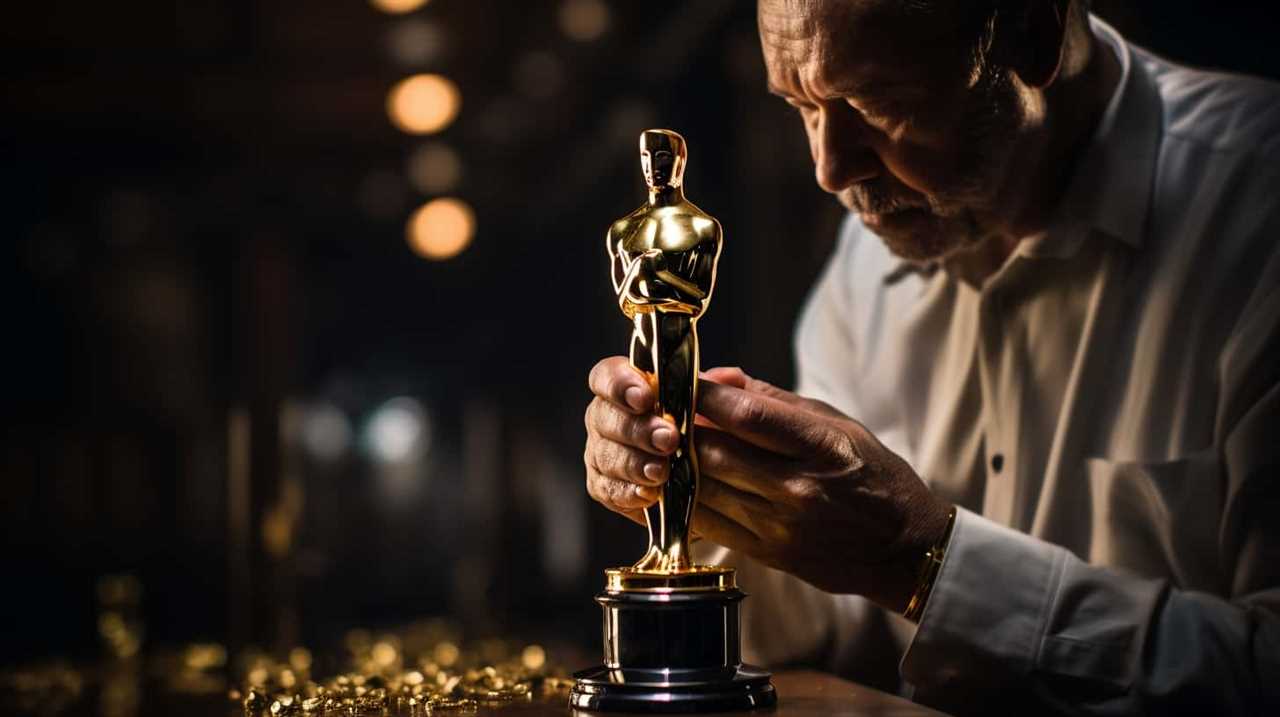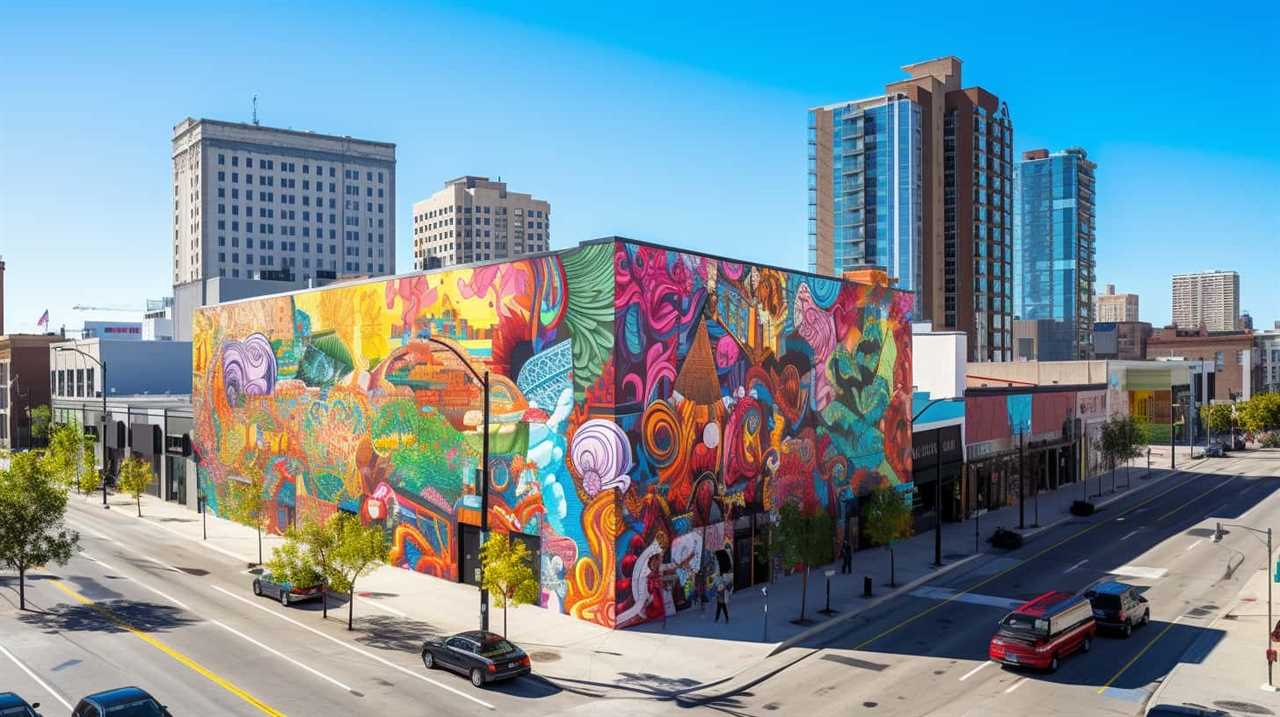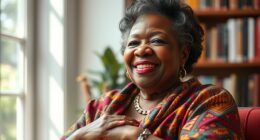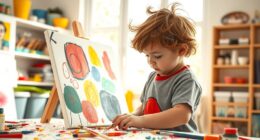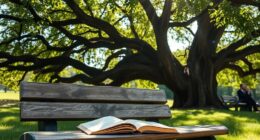As we begin to delve into the exploration of upcoming art trends, we are brimming with anticipation and enthusiasm. Our shared curiosity drives us onward, as we strive for freedom through the transformative impact of art.
From technological advancements that push the boundaries of creativity to a shift towards experiential art forms that immerse us in new dimensions, the future of art is brimming with possibilities.
We envision a world where sustainability and eco-consciousness intertwine with artistic expression, nurturing a deep connection between art and the environment. The fusion of traditional and digital art techniques opens doors to uncharted realms of creativity, while the exploration of cultural diversity and inclusivity celebrates the rich tapestry of humanity.
Virtual and augmented reality beckon us to step into alternate realities, blurring the lines between the tangible and the virtual. As the art market and collecting practices evolve, we witness a rise in the intersection of art and activism, where creative voices become agents of change.
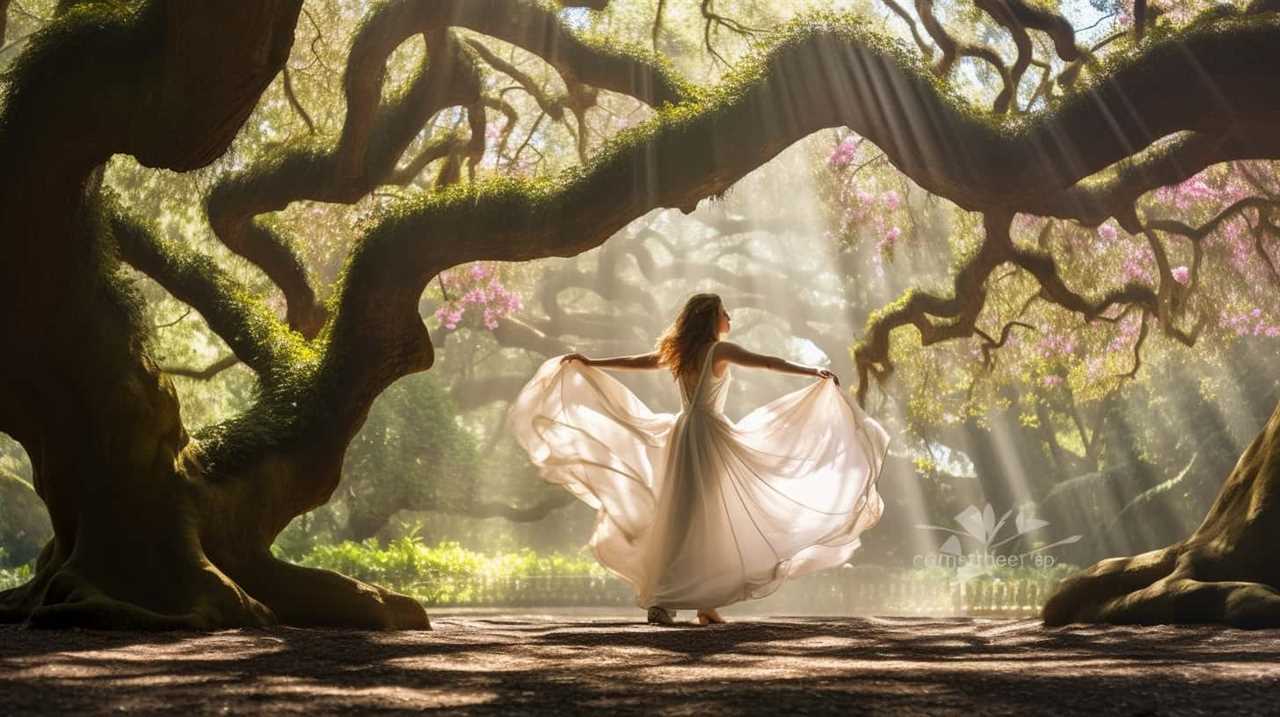
Tomorrow’s art trends hold immense potential, inviting us to embrace liberation and embrace the future of artistic expression.
Key Takeaways
- Technological advancements in art, such as digital innovations and interactive installations, will continue to revolutionize art experiences.
- There will be a shift towards experiential art forms, with virtual reality and augmented reality providing immersive experiences and interactive sculptures responding to audience movements or touch.
- Sustainability and eco-consciousness will be emphasized in art, with artists repurposing discarded materials, using sustainable materials, and promoting environmental activism through creative platforms.
- The fusion of traditional and digital art techniques will continue, with artists exploring new creative possibilities by combining digital tools with traditional art forms.
Technological Advancements in Art
In the near future, we’ll witness an exciting integration of technology in art. Digital innovations and interactive installations are set to revolutionize the way we experience and appreciate artistic creations. The convergence of art and technology opens up a world of possibilities, allowing artists to push boundaries and challenge traditional norms.
Digital innovations have already made a significant impact on the art world. Artists are now able to create stunning visual effects and immersive experiences using virtual reality, augmented reality, and projection mapping. These technologies allow for a deeper level of engagement, as viewers become active participants in the artwork. Gone are the days of passive observation; now, art demands interaction.
Interactive installations are at the forefront of this technological revolution. These installations invite viewers to engage physically, emotionally, and intellectually with the artwork. Whether it’s through touch, movement, or sound, viewers are encouraged to explore and interact with the piece, creating a unique and personalized experience. This interactivity breaks down barriers between the artist and the audience, fostering a sense of liberation and empowerment.
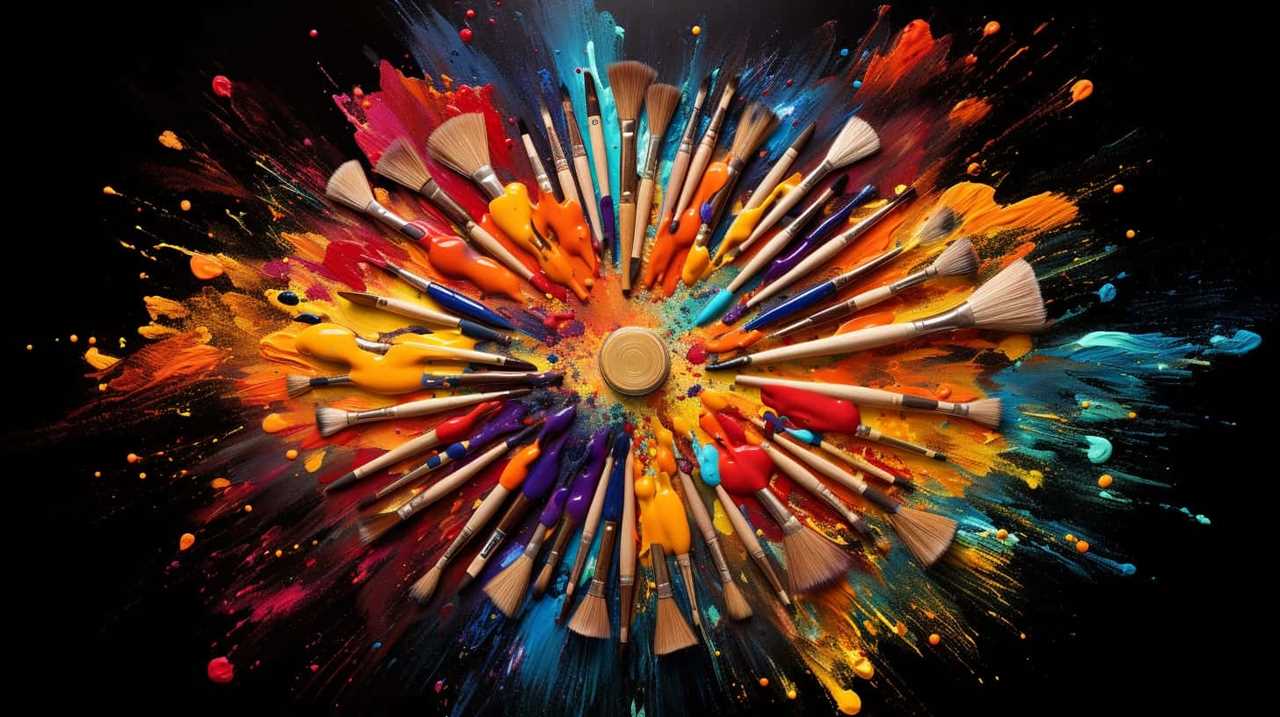
As technology continues to advance, we can only imagine the endless possibilities it holds for the future of art. From immersive virtual reality experiences to interactive sculptures that respond to our touch, the integration of technology in art will redefine how we perceive and engage with artistic creations. It’s an exciting time to be a part of this evolving landscape, where the boundaries of art are constantly being pushed and reimagined.
Shift Towards Experiential Art Forms
With the advancement of technology and the increasing demand for immersive experiences, we are witnessing a shift towards experiential art forms. This evolution in the art world is driven by the desire for a more interactive and engaging artistic experience. Traditional static artworks are being overshadowed by interactive installations that allow the audience to actively participate and become a part of the artwork itself.
| Experiential Art Forms | Characteristics |
|---|---|
| Virtual Reality (VR) | Provides a fully immersive experience through the use of VR headsets and interactive environments. |
| Augmented Reality (AR) | Enhances the real-world environment by overlaying digital elements, creating a blended experience. |
| Interactive Sculptures | Incorporates technology and sensors to respond to the audience’s movements or touch, creating a dynamic relationship between the artwork and the viewer. |
| Multimedia Installations | Combines various mediums such as video, sound, and lighting to create a multisensory experience that stimulates different senses simultaneously. |
| Site-Specific Artworks | Designed to exist in a specific location, these artworks often interact with the environment and incorporate elements unique to the site, inviting viewers to engage with their surroundings. |
These experiential art forms offer a departure from the traditional passive observation of artwork. Instead, they invite viewers to actively engage and explore, fostering a deeper connection and personal interpretation of the artistic message. The shift towards experiential art forms reflects a desire for liberation from the confines of traditional art spaces and a longing for immersive experiences that transcend boundaries. As technology continues to advance, we can expect to see even more innovative and boundary-pushing experiential art forms emerge, blurring the lines between art and life.
Emphasis on Sustainability and Eco-Consciousness
Our commitment to sustainability and eco-consciousness drives the art world towards a greener and more environmentally responsible future. As artists and art enthusiasts, we recognize the importance of minimizing our environmental impact and embracing sustainable materials. It’s imperative that we shift our focus towards creating art that not only captivates, but also nurtures the planet we call home.
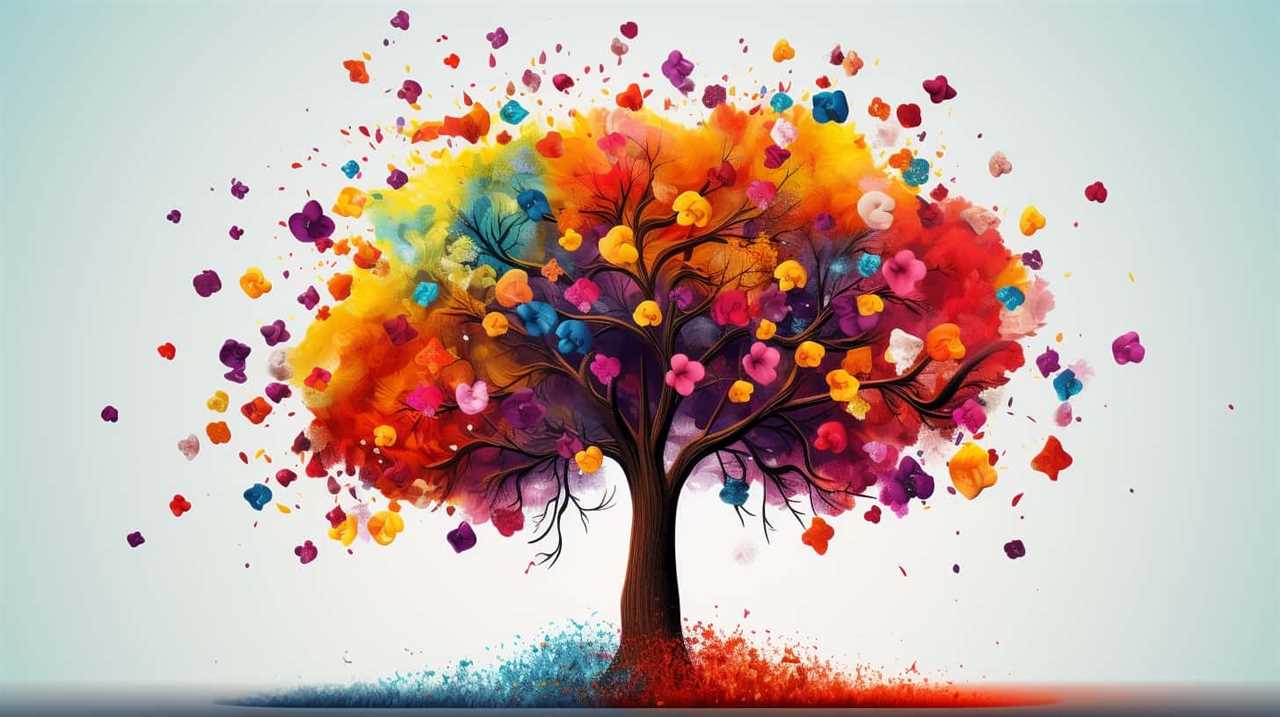
In this pursuit, we’re witnessing a significant shift in art trends, with an emphasis on sustainability and eco-consciousness. Here are five key aspects that highlight this growing movement:
- Upcycling: Artists are repurposing discarded materials and transforming them into stunning works of art, reducing waste and promoting resourcefulness.
- Natural materials: The use of sustainable materials such as bamboo, reclaimed wood, and natural dyes is becoming increasingly popular, emphasizing the connection between art and the environment.
- Green exhibitions: Art galleries and museums are adopting eco-friendly practices, incorporating renewable energy sources, and implementing sustainable exhibition designs to minimize their carbon footprint.
- Environmental activism: Artists are using their creative platforms to raise awareness about pressing environmental issues, sparking conversations and inspiring change.
- Artistic installations: Large-scale installations are incorporating sustainable elements, such as solar panels and rainwater harvesting systems, showcasing the potential of art to create positive environmental impact.
Through our collective efforts, we’ve the power to inspire and create a more sustainable future, where art and environmental consciousness go hand in hand. Together, let’s embrace this transformative movement and pave the way for a greener art world.
Fusion of Traditional and Digital Art Techniques
The fusion of traditional and digital art techniques is a fascinating trend that brings together the old and the new in exciting ways. It allows artists to combine traditional artistic skills and craftsmanship with the limitless possibilities of digital technology.
This blending of techniques creates unique and innovative artworks that push the boundaries of creativity and challenge traditional notions of art.

As we continue to embrace technology, the fusion of traditional and digital art techniques is likely to become even more prevalent, shaping the future of art.
Traditional Meets Digital
We are witnessing a dynamic fusion of traditional and digital art techniques in today’s art world. This merging of the old and the new has resulted in a captivating blend of creativity that pushes the boundaries of artistic expression. Here are five key observations on the traditional meets digital trend:
- Traditional techniques are being revitalized through digital innovation, breathing new life into age-old practices.
- Digital tools and software are enabling artists to experiment and explore new possibilities in their artistic process.
- Artists are seamlessly combining traditional mediums with digital elements, creating visually stunning and thought-provoking works.
- The accessibility and convenience of digital platforms have democratized art, allowing artists to reach a wider audience and share their creations with the world.
- The fusion of traditional and digital art techniques is revolutionizing the art world, challenging traditional notions of what constitutes art and paving the way for innovative and boundary-pushing creations.
This fusion of traditional and digital techniques not only showcases the evolution of art but also liberates artists to explore new avenues of expression, creating a vibrant and diverse artistic landscape.
Blending Old and New
Blending old and new, we’re witnessing a dynamic fusion of traditional and digital art techniques in today’s art world. This blending is driven by a desire for nostalgic aesthetics and a revival of craftsmanship. Artists are exploring the possibilities of combining traditional techniques, such as painting and sculpting, with digital tools and technologies. The result is a harmonious marriage of the familiar and the innovative, where the past converges with the present.
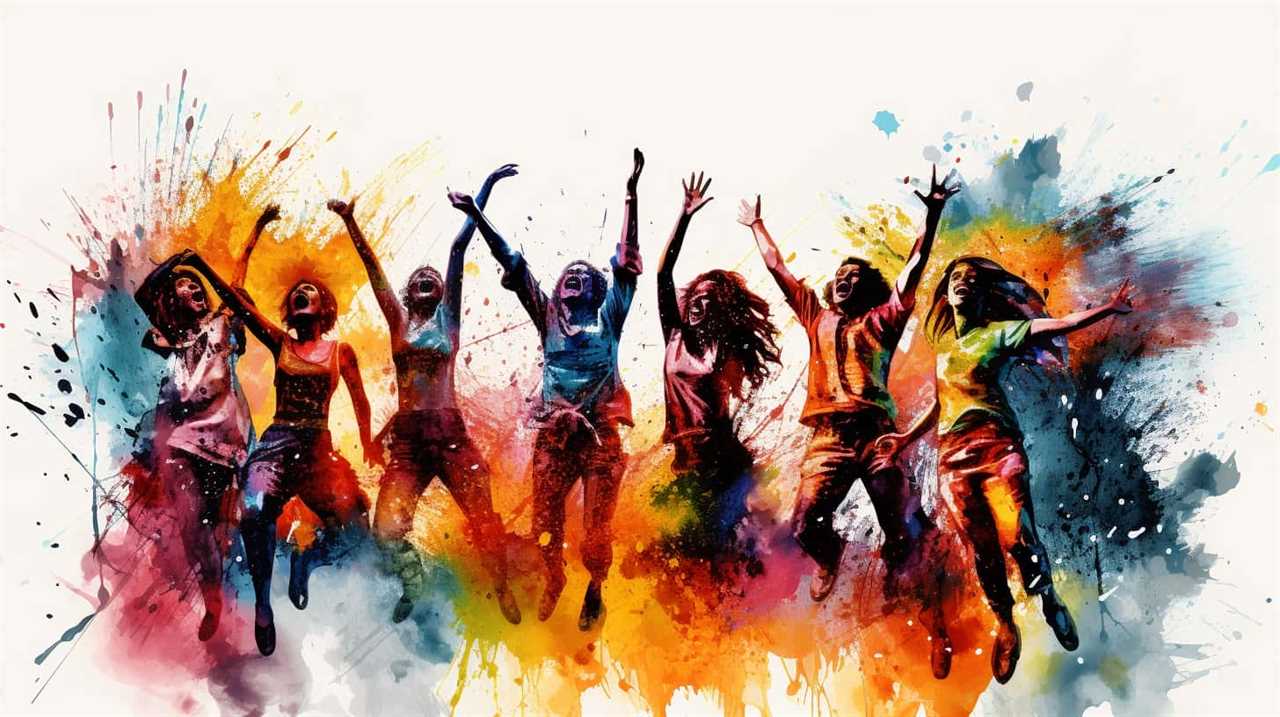
This blending of old and new allows artists to push the boundaries of their creativity while still paying homage to the traditional art forms that came before. It also opens up new avenues for artistic expression, offering artists a wide range of tools and techniques to explore.
As we delve deeper into this exploration of blending old and new, we’ll discover how it intertwines with the exploration of cultural diversity and inclusivity in the art world. By embracing both traditional and digital art techniques, artists are able to create works that transcend boundaries and speak to a global audience.
Exploration of Cultural Diversity and Inclusivity
Through the lens of artistic expression, our team is excited to delve into the realm of cultural diversity and inclusivity, fostering a sense of unity and understanding among different communities. In today’s art world, there’s an increasing recognition of the need for authentic representation and the exploration of cultural diversity. Here are five key observations and insights that shed light on this important topic:
- Cultural Appropriation Controversy: The debate surrounding cultural appropriation in art continues to be a significant point of discussion. Artists are grappling with questions of ownership, respect, and the fine line between appreciation and appropriation. This controversy prompts us to reflect on the power dynamics at play and the importance of giving credit where it’s due.
- Representation in Art: Artists are increasingly striving to accurately represent the diverse range of cultures and communities within their work. This shift towards inclusivity challenges the traditional canon and opens up space for underrepresented voices to be heard. It’s a powerful tool for breaking down stereotypes and promoting a more inclusive society.
- Intersectionality: The exploration of cultural diversity isn’t limited to a singular identity or experience. Art is embracing the complexity of intersectionality, where various aspects of a person’s identity intersect, such as race, gender, sexuality, and disability. This multidimensional approach allows for a more nuanced understanding of the diverse human experience.
- Collaborative Practices: Artists are recognizing the value of collaboration as a means to explore cultural diversity. By working alongside individuals from different backgrounds, they can gain new perspectives and challenge their own preconceived notions. This collaborative approach fosters empathy, understanding, and the dismantling of cultural barriers.
- Global Dialogue: The art world is becoming increasingly interconnected, allowing for a global dialogue on cultural diversity and inclusivity. Artists from different countries and cultures are sharing their stories and perspectives, facilitating a deeper understanding and appreciation of the rich tapestry of human experiences.
Rise of Virtual and Augmented Reality in Art
As we delve into tomorrow’s art trends, it’s important to consider the rise of virtual and augmented reality in art. Virtual reality galleries and augmented reality installations have emerged as powerful tools for artists to push the boundaries of creativity and engage audiences in new and immersive ways.

Virtual reality galleries offer a unique and transformative experience for art enthusiasts. Through the use of VR headsets, viewers can step into virtual spaces and explore artworks in a 360-degree environment. This technology allows for a deeper connection with the artwork, as viewers can examine details and perspectives that may not be possible in a traditional gallery setting. Furthermore, virtual reality galleries have the potential to democratize art, making it accessible to a wider audience regardless of their location or physical abilities.
Augmented reality installations, on the other hand, integrate virtual elements into real-world environments. Artists can overlay digital content onto physical spaces, creating interactive and dynamic experiences. This blending of the virtual and physical realms offers endless possibilities for artistic expression. From interactive sculptures to immersive storytelling, augmented reality installations challenge traditional notions of art and redefine the relationship between the viewer and the artwork.
The rise of virtual and augmented reality in art opens up new avenues for creativity and audience engagement. It allows artists to explore uncharted territories and break free from the constraints of traditional mediums. As technology continues to advance, we can expect to see even more innovative and boundary-pushing artworks emerge in the realm of virtual and augmented reality.
Evolution of Art Market and Collecting Practices
As the art market continues to evolve, it’s crucial to analyze the changing demographics of buyers and the impact of technology on collecting practices.
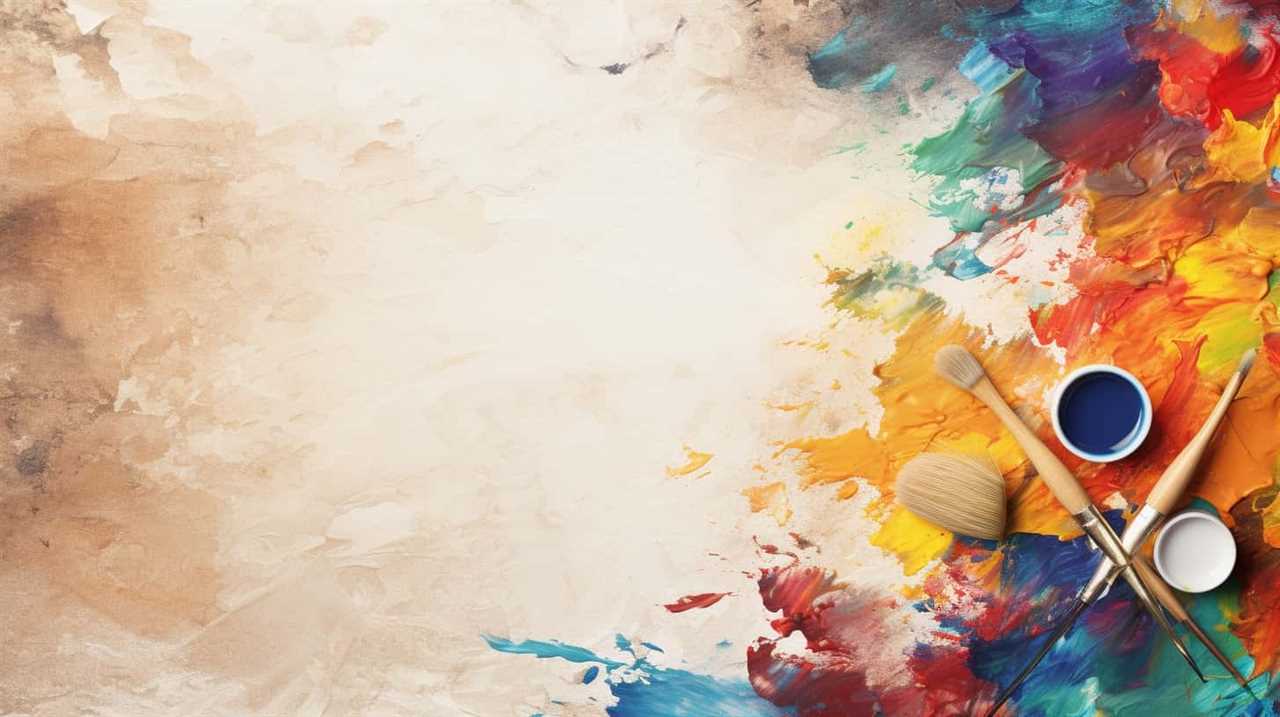
With the rise of digital platforms and online marketplaces, a younger generation of collectors is emerging, seeking out art that aligns with their digital lifestyles.
This shift in buyer demographics is reshaping the art market, as traditional galleries and auction houses adapt to cater to the preferences and purchasing habits of this tech-savvy audience.
Changing Buyer Demographics
We’re witnessing a significant shift in the art market and collecting practices due to the evolving demographics of buyers. This change is reshaping the industry and leading to new trends and opportunities.
Here are some key observations:

- Younger generations are becoming more interested in art, with changing buyer preferences towards contemporary and digital art.
- The rise of emerging art markets, such as Asia and the Middle East, is attracting a diverse group of collectors and investors.
- Online platforms and social media are playing a crucial role in connecting artists and buyers, breaking down traditional barriers.
- Sustainability and ethical considerations are becoming increasingly important to buyers, influencing their purchasing decisions.
- Female collectors are gaining prominence, challenging the male-dominated art world and driving demand for female artists.
As the art market continues to evolve, it’s essential for artists, galleries, and institutions to adapt and embrace these changing demographics to thrive in the industry.
Impact of Technology
Technology has revolutionized the art market and collecting practices, transforming the way artists create and sell their work. With the advent of 5G technology and the integration of artificial intelligence, the art world is experiencing a seismic shift.
Artists now have access to a vast array of tools and resources that enable them to experiment with new mediums and techniques. They can collaborate with AI algorithms to create innovative and thought-provoking pieces.
Additionally, technology has democratized the art market, allowing artists to sell their work directly to a global audience through online platforms. This has disrupted traditional gallery models and empowered artists to take control of their own careers.
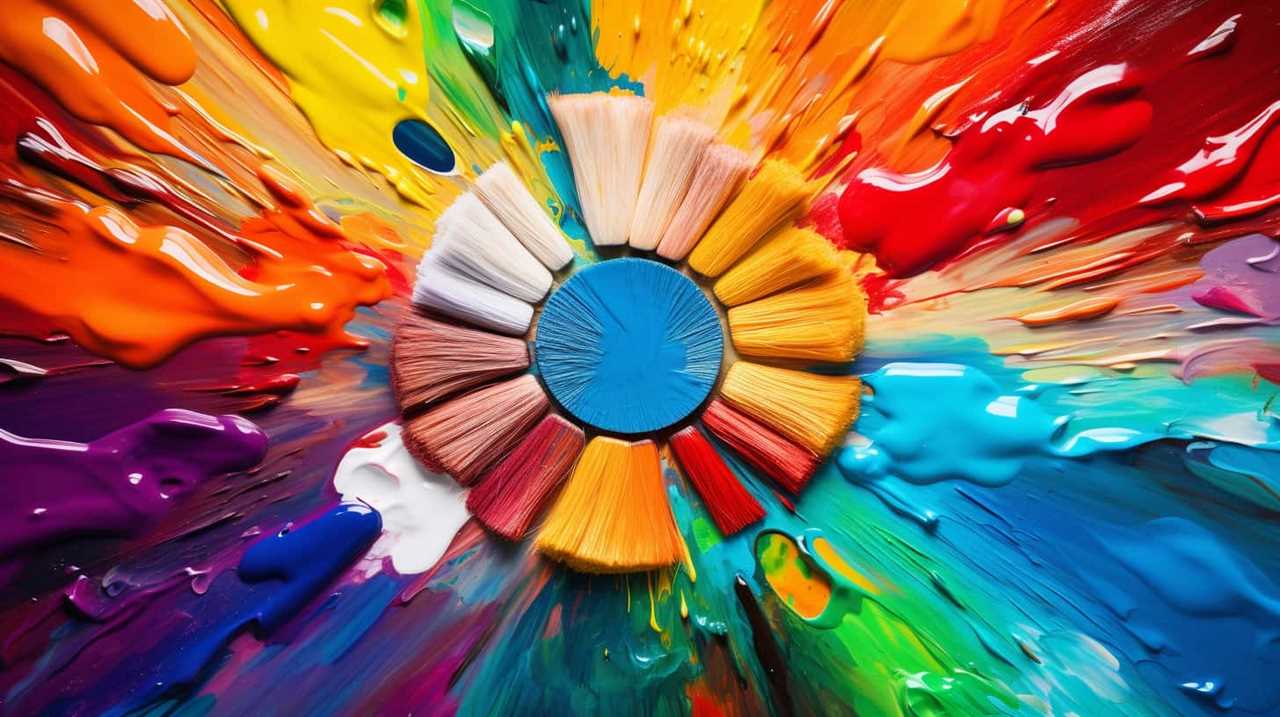
As the boundaries between art and technology continue to blur, we can expect to see even more exciting developments in the future.
Now, let’s explore the next section on the blurring boundaries between art and activism.
Blurring Boundaries Between Art and Activism
Our research suggests that an increasing number of artists are actively incorporating social and political issues into their artwork, blurring the boundaries between art and activism. This trend, known as artistic activism, has gained significant momentum in recent years. Artists are using their creative voice to address pressing societal issues and inspire change.
Here are some key observations on this topic:

- Art as a Catalyst: Art has the power to provoke thought, challenge norms, and ignite conversations. Artists are leveraging this power to raise awareness about social and political issues that often go unnoticed. By using their artwork as a catalyst, they’re able to engage audiences in a meaningful and impactful way.
- Intersectionality: Artists are recognizing the interconnected nature of various social justice movements. They’re creating artwork that highlights the intersections between different forms of oppression, such as racism, sexism, and homophobia. This approach allows for a more inclusive and holistic understanding of social issues.
- Amplifying Marginalized Voices: Artistic activism provides a platform for marginalized voices to be heard. Artists are using their platforms to amplify the stories and experiences of marginalized communities, shedding light on the systemic injustices they face.
- Fostering Dialogue and Empathy: Art has the ability to bridge gaps and foster dialogue between people with differing perspectives. Artists are using their work to create spaces for conversations, promoting empathy, and encouraging understanding.
- Challenging the Status Quo: Artistic activism challenges the status quo by questioning existing power structures and advocating for change. Artists are pushing boundaries, challenging societal norms, and inspiring others to join the fight for justice and equality.
As the boundaries between art and activism continue to blur, we can expect to see a rise in powerful and transformative artistic expressions that challenge and reshape our society. This growing movement holds the potential to bring about meaningful change and create a more equitable world.
Frequently Asked Questions
How Can Technological Advancements in Art Enhance the Viewer’s Experience and Interaction With the Artwork?
Technological advancements in art can enhance our experience and interaction with artwork. Immersive installations and virtual reality experiences create a sense of presence, allowing us to engage with art on a deeper level, breaking free from traditional boundaries and expanding our perception.
What Are Some Examples of Experiential Art Forms That Have Gained Popularity in Recent Years?
Interactive installations and virtual reality experiences have gained popularity in recent years. They allow viewers to engage with art in new and immersive ways, creating a liberating experience that breaks the boundaries of traditional art forms.
How Can Sustainability and Eco-Consciousness Be Integrated Into the Creation and Exhibition of Artworks?
Incorporating sustainable art practices and embracing art as a form of environmental activism are essential for the future. By intertwining creativity with eco-consciousness, we can create powerful artworks that inspire change and contribute to a more sustainable world.
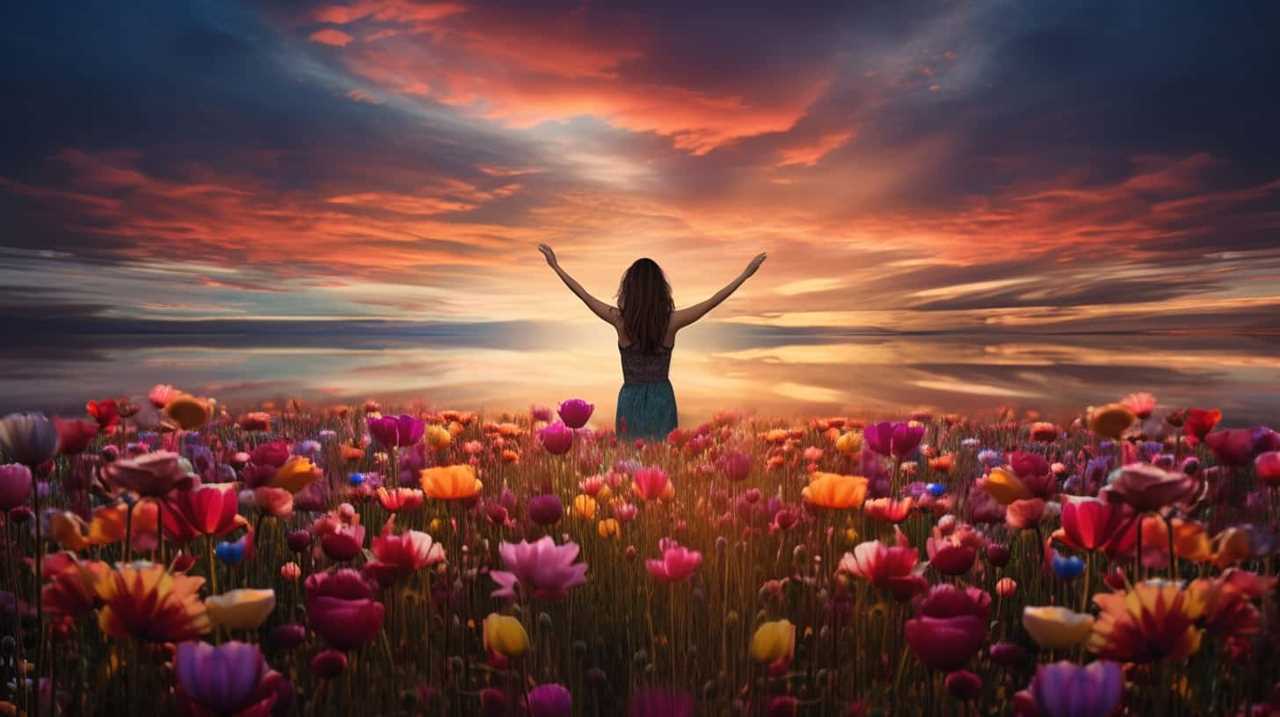
Can You Provide Some Examples of Traditional and Digital Art Techniques Being Combined to Create Unique Artworks?
Combining traditional and digital art techniques has become a popular way to create unique artworks. By merging the tangible and the virtual, artists are able to explore new possibilities and push the boundaries of artistic expression.
How Can the Exploration of Cultural Diversity and Inclusivity in Art Contribute to a More Inclusive and Representative Art World?
Exploring art as a form of activism and the impact of art in fostering empathy and understanding are essential in creating a more inclusive and representative art world. By embracing cultural diversity, we liberate ourselves from limiting perspectives.
Conclusion
As we gaze upon tomorrow’s art trends, we can’t help but marvel at the predictability of it all.
The fusion of traditional and digital techniques, the emphasis on sustainability, the rise of virtual and augmented reality – it’s as if we’re trapped in a perpetual loop of artistic evolution.

But fear not, for in this predictable landscape lies the beauty of irony.
As art becomes more innovative, it also becomes more predictable, leaving us pondering the depths of creativity and the boundaries of our own imagination.
Lauren’s talent in writing is matched by her passion for storytelling. Her love for books and deep understanding of culture and entertainment add a distinct flavor to her work. As our media and press contact, Lauren skillfully bridges the gap between afterQuotes and the broader media landscape, bringing our message to a wider audience.

